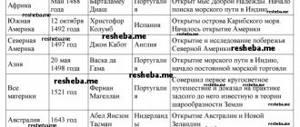Project “Growing a crystal at home”
“Growing a crystal at home
»
Why are we interested in this topic?
In winter, we often admired trees covered with frost and carefully examined snowflakes during snowfalls. And in one of the lessons about the surrounding world, we learned that both frost and snowflakes are crystals that are formed from water vapor. We wondered, what else could such beautiful crystals be formed from?
- Relevance:
This topic is relevant due to the fact that growing crystals is a very interesting and exciting activity.
We learn a lot of new and interesting things, we like to experiment and observe. It turns out that they are also crystals. I was interested to know if it was possible to grow crystals at home.
- Hypothesis:
We assume that it is indeed possible to grow some types of crystals at home.
- Objective of the project:
Conduct research on growing crystals of table salt and
copper sulfate.
- Research objectives:
1.
Find out what a crystal is;
2.What types of crystals are there?
3.Create conditions for crystal growth and conduct an experiment;
4.Analyze the results obtained.
- Object of study: crystals.
- Subject of research: table salt crystals.
- Research methods:
1. Study of literature;
2. Experiments – observation, research, analysis.
World of Crystals
.
Crystals are amazing creations of nature.
We are delighted by their bright colors and transparency, even, smooth edges and, most importantly, the correct shape.
Crystals look as if someone specially cut them, polished them and painted them... Many of the most common substances around us are crystals. Freezing water turns into ice crystals or snowflakes. Every single particle of salt or sugar is also a crystal!
People have learned to grow artificial crystals such as rubies, emeralds, diamonds, which are widely used in the jewelry industry.
In children's encyclopedias and on the Internet there are examples of growing crystals at home.
Why
we try?
What are crystals?
The name “crystal” comes from two Greek words – “cold” and “freeze”, i.e. in ancient times it meant “frozen ice.” According to the encyclopedia, a crystal is a solid. The particles that make up a crystal are arranged and joined together in various ways. Because of this, crystals can have different shapes and sizes.
What types of crystals are there?
Crystals are very different.
There are crystals that are found deep in the earth. They are often called the “colors of the stone world.” The sizes of such crystals sometimes reach human height.
There are also very thin crystals, the thickness of which is less than that of a piece of paper. But there are also huge layers, the thickness of which reaches several meters.
There are small crystals, narrow and sharp as needles, but they can also be very huge. Sometimes crystals are formed that look like tree branches, very fragile, but very beautiful. Some minerals form crystals that can only be seen under a microscope.
Application of crystals.
The applications of crystals in science and technology are very diverse. For example, rock salt has long been part of human life. In everyday life we simply call it salt. It is impossible to imagine how we would manage without her. In ancient times, the countries where it was imported paid a price equal to gold: for a kilogram of salt - a kilogram of gold sand.
The hardest natural mineral is diamond. Due to its hardness, diamond plays an important role in technology. Diamond saws are used to cut stones. The entire watch industry runs on artificial rubies. Ruby will be used to create a laser. It turns out that the ruby crystal amplifies the light. The laser shines brighter than a thousand suns!
Crystals are used to create telephones, photo and video cameras, and liquid crystal televisions.
Practical part.
Experience No. 1
Experiment No. 1. Growing a crystal of table salt.
1. For the experiment, we took a plastic cup, hot water and salt. Salt was added until it stopped dissolving.
2. A thread was tied to the stick, on which the crystals will then be collected. They dipped it in a solution with salt.
3. Let the solution cool. The slower it cools, the larger the crystals will be.
4. After 7 days our crystal looked like this.
5. After 14 days, a crystal of table salt grew.
Conclusion:
a salt crystal grows due to the growth of other crystals on it from an aqueous solution of salt.
Practical part.
Experience No. 2
Experiment No. 2. Growing a crystal of copper sulfate.
Copper sulfate is used in agriculture to combat pests and plant diseases.
1. To grow a copper sulfate crystal, you need copper sulfate powder, a glass jar, and hot water.
2. Pour hot water into the jar and stir the powder until completely dissolved.
3. Tie a thread onto a stick and lower it into the solution. Let the solution cool.
4. After 7 days our crystal looked like this.
5. After
14 days, a crystal of copper sulfate grew.
Conclusion:
the copper sulfate crystal grows faster than salt, the crystal itself is very beautiful with clear edges.
Conclusion
The experiment showed that you can grow crystals yourself at home. Crystals grow in a saturated solution as the liquid gradually evaporates. Copper sulfate crystals grow faster, and salt crystals grow slower. Crystals grow much faster when there is a lot of heat and light. The whole process takes place in 2-3 weeks. Crystals can be grown in different colors and sizes.
As a result of the research, the hypothesis is fully confirmed: we managed to grow a crystal from table salt and a crystal from copper sulfate at home.
Research project on the topic: “Growing crystals at home”
Comprehensive secondary school of the village of Zhana Zhuldyz
In-school research project “Zerde”
Topic: “Growing crystals at home”
Prepared by: Student 6 “B” Class Melnik Ulyana
Project manager: Biology teacher Aidarkhanova Z.T.
2016-2017 academic year
Good afternoon, dear guests and young researchers! I bring to your attention a research paper on the topic: “Growing crystals at home.”
The relevance
of the study
lies in the fact that growing crystals is an exciting activity and, perhaps, the simplest, most accessible, and safe;
Goal of the work:
conduct research on growing crystals of table salt, sugar and copper sulfate at home.
Tasks:
1. Find out what a crystal is;
2.What types of crystals are there?
3.Create conditions for crystal growth and conduct an experiment;
4.Analyze the results obtained.
Research methods:
- Accumulation of theoretical material.
- Conducting experimental activities in order to obtain crystals from table salt, sugar and copper sulfate.
- Analysis of the research results obtained.
Object of study
are crystals.
The subject of the study
is
the crystallization process.
Research hypothesis:
we assumed that crystals can appear when certain conditions are created; This means that if you change the crystallization conditions and dissolve various substances, you can get crystals of different shapes and colors at home.
What are crystals? Crystals, translated from Greek, (krystallos) “ice”. According to the encyclopedia, a crystal is a solid. Crystals grow by attaching particles of substance from liquid or vapor. Crystals can be of natural origin or artificial, grown in specially created conditions. And every person, if desired, can easily grow crystals at home. But in order for the result to turn out really beautiful, you need to carefully perform all the actions.
We decided to test everything ourselves, and used ordinary table salt, sugar and copper sulfate as a base.
Having analyzed the textual material and determined the research methods, we carried out experimental work on growing crystals at home.
- experiment No. 1
Growing crystals from table salt .
1. For the experiment, we took a glass jar, hot water and salt. Salt was added until it stopped dissolving.
2. A thread was tied to the stick, on which the crystals will then be collected. They dipped it in a solution with salt.
3. Let the solution cool. The slower it cools, the larger the crystals will be.
4. After 10 days, our crystal looked like this.
5. After 17 days, a crystal of table salt grew.
Result:
we received a crystal of table salt.
A salt crystal grows due to the growth of other crystals on it from an aqueous solution of salt.
Conclusion:
1. Table salt consists of crystals.
2. When salt crystals come into contact with water, they dissolve.
3. Salt crystals can form most quickly in a saturated solution of table salt.
4. As the water evaporates, the salt forms crystals again.
5. At home, you can grow crystals under the necessary conditions: the presence of a saturated saline solution and a thread with a seed.
- experiment No. 2
Growing crystals from sugar .
1. To grow a crystal from sugar, you need sugar powder, a glass jar, and hot water.
2. Pour hot water into a glass cup and stir the sugar until completely dissolved.
3. Tie a thread onto a stick and lower it into the solution. Let the solution cool.
Result:
we got colorless sugar crystals.
After 14 days, my crystal became a little larger in size, and crystal growth continued along the thread.
Conclusion:
1. Sugar consists of crystals.
2. When sugar crystals come into contact with water, they dissolve.
3. As the water evaporates, the sugar forms crystals again.
- experiment No. 3
Growing crystals from copper sulfate.
1. To grow a crystal from copper sulfate, you need copper powder, a beaker, hot water, and salt.
2. Pour hot water into a glass and stir copper sulfate until completely dissolved.
3. Tie a thread with vitriol onto a stick and lower it into the solution. Let the solution cool.
Result: After two days, a small crystal grew on the thread, the growth of the crystal occurs quickly, in one night, the color is blue, deep blue. Two oddly shaped plates formed next to the crystal.
Crystallization
- the process of transition of a body from a liquid to a solid state, and it takes on a more or less regular geometric shape of a crystal.
Dissolution
– a process during the transition of a solid into a liquid.
Saturated solution
– a solution in which the solute no longer dissolves under given conditions.
Evaporation
- the process of transition of a substance from a liquid state to a gaseous state (steam).
CONCLUSION FROM THE STUDY:
- My experiment showed that you can grow crystals yourself at home. Crystals grow in a saturated solution as the liquid gradually evaporates. Crystals of salt and copper sulfate grow faster, and crystals of sugar grow slower. Crystals grow much faster when there is a lot of heat and light. The whole process takes place in 2-3 weeks. Crystals can be grown in different colors and sizes (but I only grew colorless and blue crystallins from copper sulfate).
- I liked growing crystals - it's a very exciting activity.
- As a result of the research, the hypothesis is fully confirmed: we were able to grow a crystal from table salt, sugar and copper sulfate at home.







